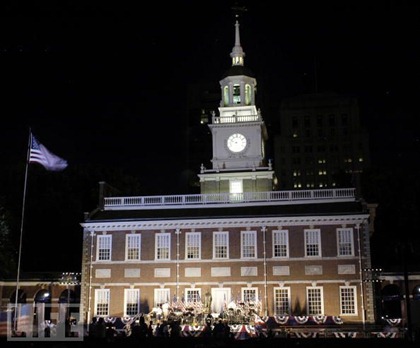The Declaration of Independence and US Constitution were signed at Independence Hall in Philadelphia, PA, in 1776. On July 8, 1776, the Liberty Bell, made by John Pass & John Stow (Pass and Stow) was rung to summon people for the reading of the Declaration of Independence.
It was cast in London, England cracking soon after it arrived in Philadelphia. Pass and Stow cast a new bell in 1753, using metal from the English bell. Their names appear on the front of the bell, along with the city and the date. By 1846 a thin crack began to affect the sound of the bell. The bell was repaired in 1846 and rang for a George Washington birthday celebration, but the bell cracked again and has not been rung since.
The bell weighs about 2000 pounds. It is made of 70% copper, 25% tin, and small amounts of lead, zinc, arsenic, gold and silver. It hangs from what is believed to be its original yoke, made from American elm, also known as slippery elm.
The Bell’s Message
In 1751, the Speaker of the Pennsylvania Assembly ordered a new bell for the State House. He asked that a Bible verse to be placed on the bell – “Proclaim LIBERTY throughout all the Land unto all the inhabitants thereof” (Leviticus 25:10). As the official bell of the Pennsylvania State House (today called Independence Hall) it rang many times for public announcements.
The old State House bell was first called the “Liberty Bell” by a group trying to outlaw slavery. These abolitionists remembered the words on the bell and, in the 1830s, adopted it as a symbol of their cause. Beginning in the late 1800s, the Liberty Bell travelled around the country to expositions and fairs to help heal the divisions of the Civil War.



No comments:
Post a Comment